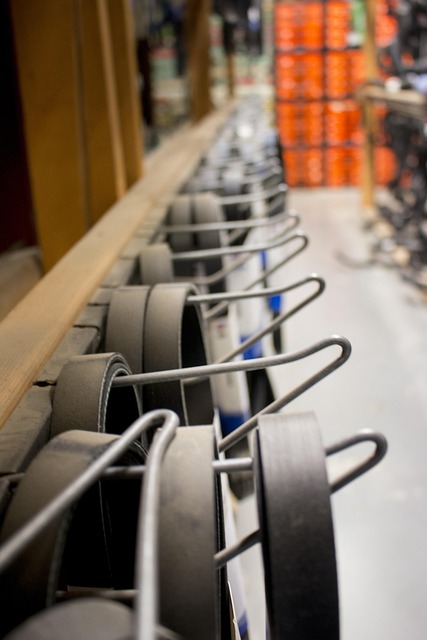Birkenstocks Sale Clearance: A Practical Guide to Finding and Buying Discounted Sandals
Hunting for discounted Birkenstock sandals can be rewarding if you know where to look, when to shop, and how to evaluate sizing, materials, and authenticity. This practical guide breaks down smart timing, trusted retailers, fit tips, comparison pointers, and what to check in returns and warranties so you can shop clearance confidently worldwide.

Finding reliable clearance deals on Birkenstock sandals is about combining timing, trusted retailers, and careful evaluation of fit and materials. Because inventory on sale changes quickly, it helps to understand how clearances work, where stock tends to surface, and what to watch for to avoid counterfeits or final-sale surprises. The steps below focus on strategies that work across regions and both online and in-store options in your area.
Where to find Birkenstocks clearance deals
Look first at the brand’s official sale or outlet pages and use the store locator to identify authorized retailers that might run seasonal markdowns. Large footwear retailers and department stores often move older colorways or seasonal sizes to their clearance sections, and outlet branches may list “display” or “open-box” pairs at additional discounts. Sign up for retailer newsletters and enable price alerts; many sites quietly mark down items before public sale events, and these alerts can catch short-lived restocks. Don’t overlook local independent shoe stores in your area, which sometimes discount last pairs more aggressively than national chains.
Timing and strategies for the best clearance prices
Seasonality drives pricing. Sandal markdowns typically peak at the end of summer and early fall, while additional reductions often appear during major sale periods such as late November and post‑holiday January events. Midweek mornings can see fresh markdowns after returns are processed. Build a shortlist of target styles and acceptable materials so you can act fast when a price drops. Combine retailer coupons with clearance when allowed, and consider in‑store pickup to avoid shipping fees. If you miss your size, check similar styles or footbed variants; prices on less popular colors and widths can be substantially lower.
Sizing, fit tips, and trying on clearance pairs
Birkenstock uses EU sizing and two width options (often labeled Regular and Narrow). The correct fit gives your toes room to move and keeps your heel centered in the cup; the footbed arch should sit under your arch without pressure points. If you can try in store, walk on both carpet and hard floors to check slippage and strap adjustability. When ordering online, measure your foot length on paper and compare against the retailer’s EU chart; if you’re between sizes, many wearers choose the larger length. Expect a short break‑in as the cork‑latex molds to your foot. If you prefer instant softness, look for “soft footbed” variants. Always verify the return policy before testing at home so you don’t void eligibility.
Comparing styles, materials, and item condition
Clearance listings often mix different constructions at different price points. EVA sandals are lightweight and water‑friendly, usually the most affordable. Birko‑Flor is a durable synthetic that’s easy to clean and often priced below leather. Oiled or nubuck leather uppers offer a more natural feel and typically cost more; soft footbed options add cushioning. Compare outsole wear and footbed condition on any “open box,” “display,” or “imperfect” listings—cosmetic scuffs can be fine, but avoid compressed footbeds or delaminating soles. Check product codes, width markings, and material descriptions to ensure you’re comparing like‑for‑like when weighing discounts across styles such as Arizona, Gizeh, Mayari, or Boston clogs.
To help set expectations, the prices below reflect typical U.S. MSRP ranges and common clearance outcomes at large, authorized retailers. These are estimates and vary by region, inventory, and timing.
| Product/Service | Provider | Cost Estimation |
|---|---|---|
| Arizona EVA | Birkenstock.com | MSRP ~ $50; clearance ~ $30–$40 |
| Arizona Birko-Flor | Zappos | MSRP ~ $110; clearance ~ $70–$90 |
| Boston Suede Clog | Nordstrom Rack | MSRP ~ $158–$170; clearance ~ $99–$129 |
| Gizeh Birko-Flor | DSW | MSRP ~ $100–$110; clearance ~ $60–$85 |
| Mayari Oiled Leather | REI | MSRP ~ $125–$130; clearance ~ $85–$110 |
Prices, rates, or cost estimates mentioned in this article are based on the latest available information but may change over time. Independent research is advised before making financial decisions.
Returns, warranties, and authenticity checks
Clearance policies vary widely. Many retailers accept returns on unworn clearance pairs within 14–60 days, though some “final sale” items are not returnable or may carry restocking fees. Keep original packaging and try shoes on clean surfaces to preserve return eligibility. Manufacturing defect claims are usually handled through the retailer within a set period; coverage differs by country and store. For longevity, note that cork edges can be sealed and footbeds or soles can often be serviced by qualified cobblers, which can make a discounted pair a strong value over time.
To avoid counterfeits, shop through the brand’s official site or verified authorized retailers. Inspect product details: clear, centered logos on footbed and outsole, consistent size/width stamps, sturdy buckles, and high‑quality stitching. Compare the SKU on the box to the inner strap tag and product page. Be wary of sites with unusually steep discounts, limited payment options, or vague contact details. Verify secure checkout and read recent customer reviews that include photos.
In sum, clearance success rests on timing, authorized sources, and careful evaluation of fit and materials. Combine end‑of‑season shopping with alerts, compare like‑for‑like constructions, and confirm returns and authenticity before you purchase. With a methodical approach, you can find discounted sandals that fit comfortably, wear well, and represent real value over the long term.



